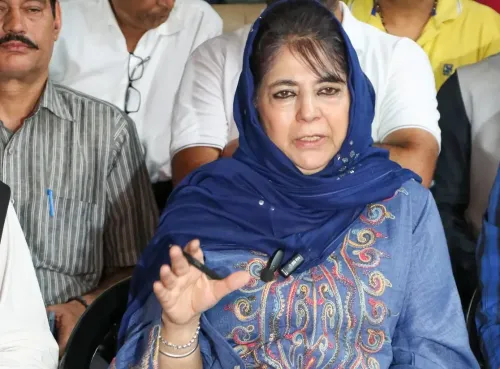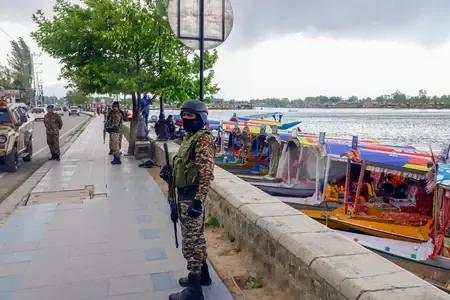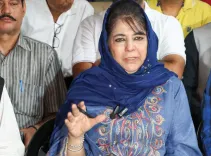What Happened to the Lifeline for 150+ Villages in Jharkhand?

Synopsis
Key Takeaways
- Bridge collapse disrupts access for over 150 villages.
- Residents face long detours to reach essential services.
- Government intervention is necessary to restore connectivity.
- Potential for emergency situations to escalate without action.
- Urgent need for infrastructure improvements in flood-prone areas.
Jamtara (Jharkhand), July 29 (NationPress) A bridge that had been a crucial lifeline for more than 150 villages in the Jamtara district of Jharkhand collapsed on Tuesday, cutting off all direct access of these villages to the district headquarters.
The Dakshin Bahal bridge, which connected Jamtara to Deoghar, succumbed to the force of rapidly flowing river water after days of relentless rain, plunging the entire region into turmoil.
Constructed in 1980 from stone boulders, the bridge was a vital route for daily commuters, students, patients, and laborers.
Authorities had already limited access to two-wheelers after the bridge suffered damage on July 18 due to heavy rainfall, but the structure ultimately gave way on Tuesday, halting all traffic.
Villagers who previously needed to travel just half a kilometer to reach schools, hospitals, and markets will now face a 15 to 20 km detour.
The collapse has brought life in this area, which is part of Jharkhand Health Minister Irfan Ansari’s constituency, to a complete standstill.
“I used to cross this bridge to reach college daily. Now it feels like our entire village is isolated from the rest of the world,” stated Aarti Kumari, a student stranded in her locality.
Daily wage workers, schoolchildren, and patients attempting to reach Jamtara Sadar Hospital are among the most impacted.
Thousands of vehicles used to traverse the bridge daily, linking people to critical services and trade routes. Now, with its collapse, all traffic has come to a halt.
Residents are concerned that emergencies could escalate into disasters without prompt government action.
Following the incident, district officials hurried to the site to evaluate the situation. With the river still swollen, locals have been cautioned to avoid the debris due to the potential for accidents.
“Barricading is underway, and we are coordinating with the relevant department to establish an alternative route and initiate construction of a new bridge,” remarked SDM Anant Kumar.
Meanwhile, locals are becoming increasingly impatient. Their demand is unequivocal -- immediate action is essential. Both temporary connectivity and a new permanent bridge need to be expedited before the monsoon exacerbates the crisis.










